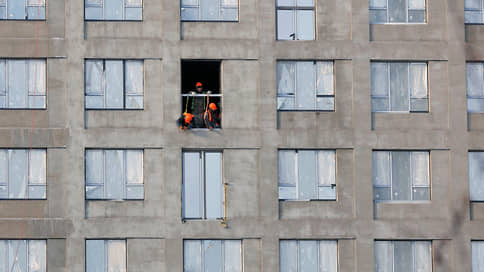The shortage of personnel in the construction industry in 2023 increased by 31% year-on-year
[ad_1]

The serious shortage of workers in the construction industry, which began in 2020, may worsen. By the end of 2024, the industry will be short 15% of its current workforce. Experts are confident that this problem can be solved by analogy with the IT sector, where specialists have a number of preferences.
In 2024, the labor shortage in the construction industry will be about 15% of the actual number of workers employed in the industry, according to a study by the National Association of Infrastructure Companies (NAIC). Now, according to analysts, the personnel shortage in the road construction industry is 11%. The shortage of workers is observed against the background of an increase in the volume of construction work, which, for example, at the end of 2023 in Russia as a whole increased in comparable prices (taking into account inflation) by 7.9% year-on-year, to 15.1 trillion rubles. (see “Kommersant” dated February 20).
The shortage of personnel in the construction industry in 2023 increased by 31% year-on-year, or by approximately 100 thousand people, HeadHunter calculated. At the same time, approximately 23 thousand people are registered with employment services across the country, indicating construction as their area of activity, as follows from the data of the “Work of Russia” portal. Thus, the construction industry is among the top industries with the highest personnel shortage, notes Anton Glushkov, president of the National Association of Builders.
Basically, the shortage of personnel is felt among masons, monolithic workers, window workers, and plasterers, notes Olga Berezhanskaya, director of personnel and organizational development of the Granel Group of Companies. According to her, for a number of positions the personnel shortage reaches 20–25%. Companies also lack engineers, estimators and architects, notes Tatyana Dolyakova, general director of the ProPersonnel recruitment agency.
The deficit is due to the demographic situation, says Natalya Leshina, Deputy General Director for Organizational Efficiency and Personnel of the Stroytransgaz Group of Companies. She cites expert estimates that by 2030 Russia will lose about 1.9 million working-age people. Moreover, adds the general director of Smart Engineers Group of Companies, Hussein Pliev, some young people with construction specialties are involved in the military operation in Ukraine. Another problem is the decrease in the number of migrants, says Denis Konovalenko, managing partner of Prime Life Development. According to Anton Glushkov, in 2023 the influx of foreign workers to Russian construction sites decreased by 50%.
NAIC is confident that the personnel shortage is due to low salaries in the industry. Although Avito Rabota says that builders topped the list of professions with the fastest income growth in 2023, when their salaries increased by 69%, to an average of 82 thousand rubles. per month. Anton Glushkov says that wages for construction workers in 2023 increased by an average of 17% year on year. The costs of the wage fund over the past two years have consistently taken up 44% of construction costs, expects Stanislav Sagiryan, General Director of RKS Development Group of Companies.
However, this applies to the construction of commercial facilities, while there was no such increase for government construction projects. According to NAIC General Director Maria Yarmalchuk, now the salaries of workers involved in state construction projects are 30% less. The market salary of welders, concrete workers, installers is 100 thousand rubles. per month, and according to the standards for government orders – less than 50 thousand rubles, she explains. Infrastructure companies pay the difference from their own profits, the expert explains.
The shortage of personnel in the construction industry will continue in the next five years, predicts Hussein Pliev. NAIC expects that by 2028 the need for welders and assemblers will increase by 61% of the current number of workers, reinforcement workers – by 33%, truck drivers and road workers – by 21%, installers of steel and reinforced concrete structures and electric and gas welders – by 16%.
Hussein Pliev believes that those employed in construction need support measures following the example of IT specialists: preferential mortgages and a deferment from military service. According to Natalya Leshina, the industry could be helped by partnership agreements with other states on labor migration.
[ad_2]
Source link





